Merlin helicopters were the first aircraft to begin flying from HMS Queen Elizabeth and they will soon be followed by F-35 jets in Autumn next year.
Merlins have already started simple flight activities from the deck of the supercarrier.
In order to prepare for operating from HMS Queen Elizabeth, Royal Navy sailors have also trained alongside their US Navy counterparts on the flight deck of the amphibious assault ship USS Wasp. According to a US Navy press release, the Royal Navy sent six Sailors to integrate into Wasp’s flight deck operations to prepare them for their upcoming Queen Elizabeth class aircraft carriers.
Royal Navy sailor Richard Clark said:
“Living with one another is good for integration, so when we work together, when we have your aircraft come to our flight decks, and vice versa, we’ll have a bit more awareness of how we each operate. It helps us work with you better on different platforms when we need to.
This is the first group of guys who are not 1st Classes. Some of them have never been on a ship before, so for the younger guys, it’s good for them to get experience.”
Recent F-35 trials aboard the USS Wasp weren’t just an operational test for the United States Marine Corps, with much of the data produced being used to inform the USMC’s declaration of initial operating capability but also for the United Kingdom.
UK personnel were fully embedded in the USS Wasp trials and will use the data gathered from this event, future trials and operational deployments to support the UK’s flying trials aboard HMS Queen Elizabeth off the US coast in Spring next year.
British F-35 pilots also recently embarked on the USS America for at-sea developmental testing phase 3 (known as DT), the last trial that paves the way for the US Marine Corps to deploy the jet operationally on amphibious assault ships.
BAE Systems test pilot Pete Wilson said about the upcoming trials on the HMS Queen Elizabeth:
“This will not be a DT phase. Testing on the Queen Elizabeth will be like DTs 1, 2 and 3 combined.
We don’t need to use fully instrumented aircraft; we already understand most of the loads on the aircraft systems, as we have tested that during earlier tests.”
According to the Ministry of Defence:
“We are fully committed to both the F-35 and the Queen Elizabeth Carrier programmes -both of which are on track to enter initial maritime operating capability in December 2020 as planned.
We expect Queen Elizabeth carrier to commence sea trials in 2017, and have been clear that UK F-35 aircraft will begin flying from Queen Elizabeth in 2018.”
What will the vessels carry?
The term now used for the carriers embarked squadrons is ‘Carrier Air Wing’ (CVW). The vessels are capable of deploying a variety of aircraft in large numbers, up to a maximum in the upper fifties in surge conditions.
Captain Jerry Kyd, commander of HMS Queen Elizabeth, commented on the initial deployment and the gradual increase in air wing numbers:
“We are constrained by the F-35 buy rate even though that was accelerated in SDSR in 2015, so initial operating capability numbers in 2020 are going to be very modest indeed.
We will flesh it out with helicopters, and a lot depends on how many USMC F-35s come on our first deployment in 2021. But by 2023, we are committed to 24 UK jets onboard, and after that it’s too far away to say.”
In 2023, the UK will have 42 F-35 aircraft, with 24 being front-line fighters and the remaining 18 will be used for training (at least 5 on the OCU), be in reserve or in maintenance.
In addition to the joint force of Royal Air Force and Royal Navy F-35Bs and their pilots, the air wing is expected to be composed of a ‘Maritime Force Protection’ package of nine anti-submarine Merlin HM2 and four or five Merlin for airborne early warning; alternatively a ‘Littoral Manoeuvre’ package could include a mix of RAF Chinooks, Army Apaches, Merlin HC4 and Wildcat HM2.
We understand that vessel would still carry at least one F-35 squadron aboard in such circumstances to offer air defence as well as support to the helicopter assault activities.
The Crowsnest AEW&C aircraft will come from a number of the embarked Merlins (any of which can be fitted with the sensor package), the number again scaling with requirements.
Recently, the Ministry of Defence confirmed plans for the deployment of American F-35 aircraft alongside British jets aboard HMS Queen Elizabeth.
The addition of US Marine Corps aircraft will see HMS Queen Elizabeth sail with 24 or so F-35Bs in addition to around 14 or so helicopters for her maiden deployment. It is understood that the US aircraft will augment British jets on coalition operations.
A source we spoke to, currently flying the jet, explained to us that the vessels will deploy with the number and type of aircraft required for a specific deployments:
“Where F-35B is based is entirely down to the most suitable basing option for the tasks/missions is being sent to do. If that’s a well-founded host nation base, great; if it’s the Carrier, great; if it’s an austere location, fine.
Range, logistics and other ‘enablers’ such as AAR and connectivity will determine what’s the best option.”
The Queen Elizabeth class mark a change from expressing carrier power in terms of number of aircraft carried, to the number of sortie’s that can be generated from the deck. The class are not the largest class of carrier in the world but they are most likely the smallest and least expensive carrier the Royal Navy could build which still have the advantages that large carriers offer.



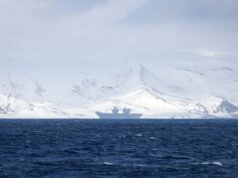
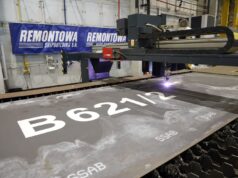
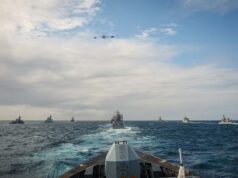



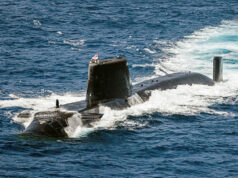

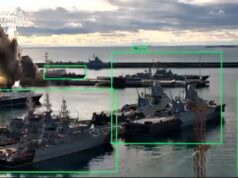
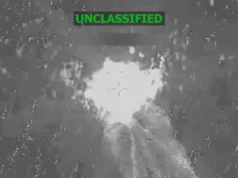

Good stuff, I like it.
Events in both the Middle East and Asia appear to be moving apace. So much so, deployment of QE1 can’t come soon enough. The brains at the MOD must be concerned about the carriers run up period, and how effective she could be in the short term. A full complement of F35 by 2023 obviously does not mean, that at least six planes could not deploy on her by early 2018?
One other factor, the urgency of her commissioning. Remember Illustrious’s hurried deployment during the Falklands war. Surely, the MOD must have some rapid commissioning plans at the ready?
I’ve been holding my breath since the UK Government decided it would be okay to scrap all existing carries years before QE1’s commissioning. Let us hope QE1 is ready to save many red faces.
it is worth noting the ambition being shown concerning naval expansion elsewhere india has taken advantage of a booming economy to quickly upgrade the size and capability to the point where it is 4th largest in the world behind the u.s, russia, and china
The MOD is masking the fact that the U.K. Has only ordered a handful of test aircraft. No substantial order for production aircraft has been made. I’ll be suspicious of any tough talk on the subject until that situation changes.
i still will not accept that we could not have upgraded the design of the harrier more suited to todays needs.the range, speed and payload, allied to carrying a bigger payload, instead, as usual, we fall for the usual american selling techniques and go for an aircraft dreadfully slow to build, expensive and largely unproven. the fact that the u.k had boxed itself into a corner with catapult missing carriers that would have enabled to buy the french rafal or swedish gripen, both cheaper, still 5th generation aircraft,faster to produce we’ll never learn.t.his white elephant has been the death bell to ship numbers already
Two UK test aircraft were ordered in 2009 and another one was ordered in 2012. That’s it so far.
Nick,F 35B unit BK 09 our 9th aircraft was delivered last month I believe.
No you are wrong Nick sorry. Annual small batches are being contracted with the aim to have the first 48 by 2024
When does she sail, for sea trials?????
Late june. I work on the rust bucket lol
Not sure if the numbers are right RAF dam busters squadron is supposed to be developing initial operating ability by June 2018 so I think at least 1 squadron should be good to go by then, fleet air arm squadron stands up at the end of 2018, so that under current forecasts we should have 24 f35b in service towards the end of 2018/ start 2019. The initial operating ability being declared by RAF and fleet airarm is block 2 software and weapons fit so: paveway laser guided bombs, amraam, asraam, gun and rocket pods.
followed 12-18 months later by block 3 upgrade with integration of meteor, brimstone, storm shadow and hellfire etc.
For fleet air defence the initial operating ability will be sufficient. the block 3 upgrade should provide some measure of antiship missile capability via brimstone and hellfire weapons.
Still need to resolve the anti-ship missile absence within the UK armed forces as a matter of urgency.
[…] Kyd, Queen Elizabeth‘s Captain, says that the maximum number of aircraft it will carry will be in the “upper fifties,” though it’ll begin operations with […]
[…] Kyd, Queen Elizabeth‘s Captain, says that the maximum number of aircraft it will carry will be in the “upper fifties,” though it’ll begin operations with […]
[…] Kyd, Queen Elizabeth‘s Captain, says that the maximum number of aircraft it will carry will be in the “upper fifties,” though it’ll begin operations with […]
[…] Kyd, Queen Elizabeth‘s Captain, says that the maximum number of aircraft it will carry will be in the “upper fifties,” though it’ll begin operations with […]
[…] Kyd, Queen Elizabeth‘s Captain, says that the maximum number of aircraft it will carry will be in the “upper fifties,” though it’ll begin operations with […]
[…] Kyd, Queen Elizabeth‘s Captain, says that the maximum number of aircraft it will carry will be in the “upper fifties,” though it’ll begin operations with […]
[…] But it will be next year at the earliest before any British F-35s fly from HMS Queen Elizabeth, according to a statement given to the UK Defence Journal earlier this year. […]
[…] View Reddit by yusosit – View Source […]